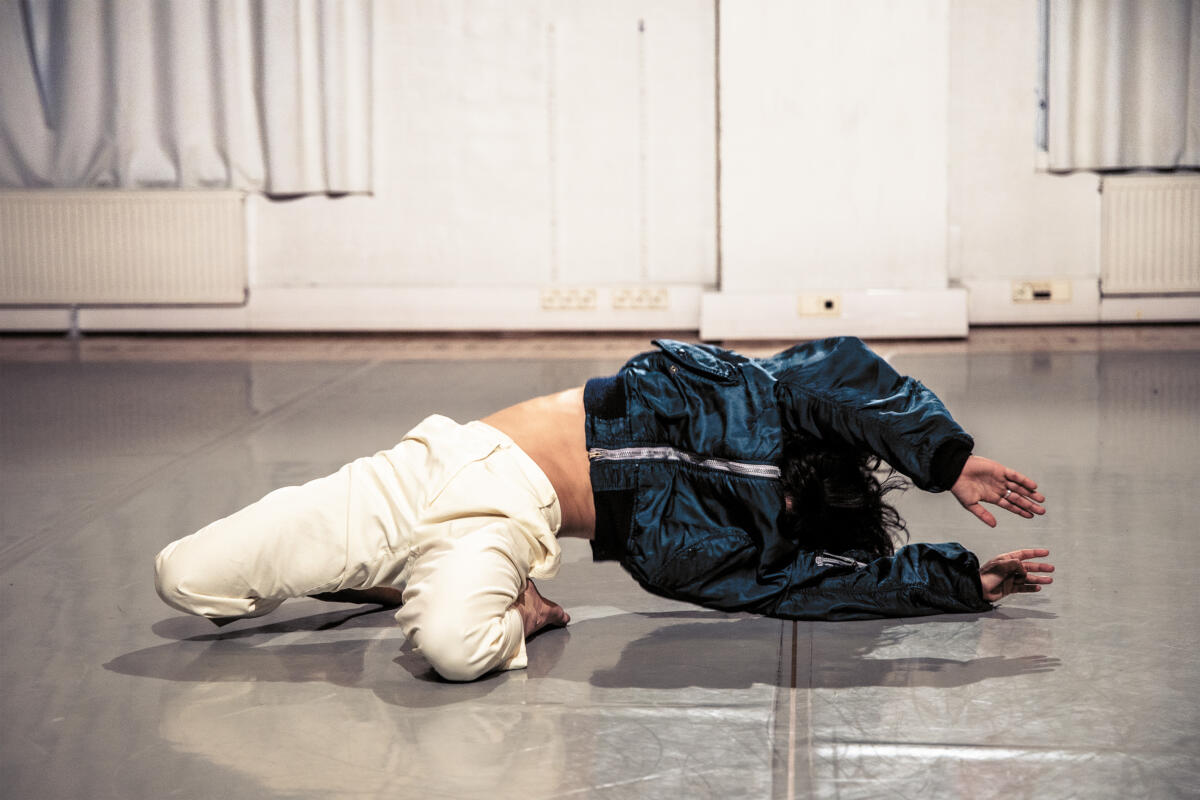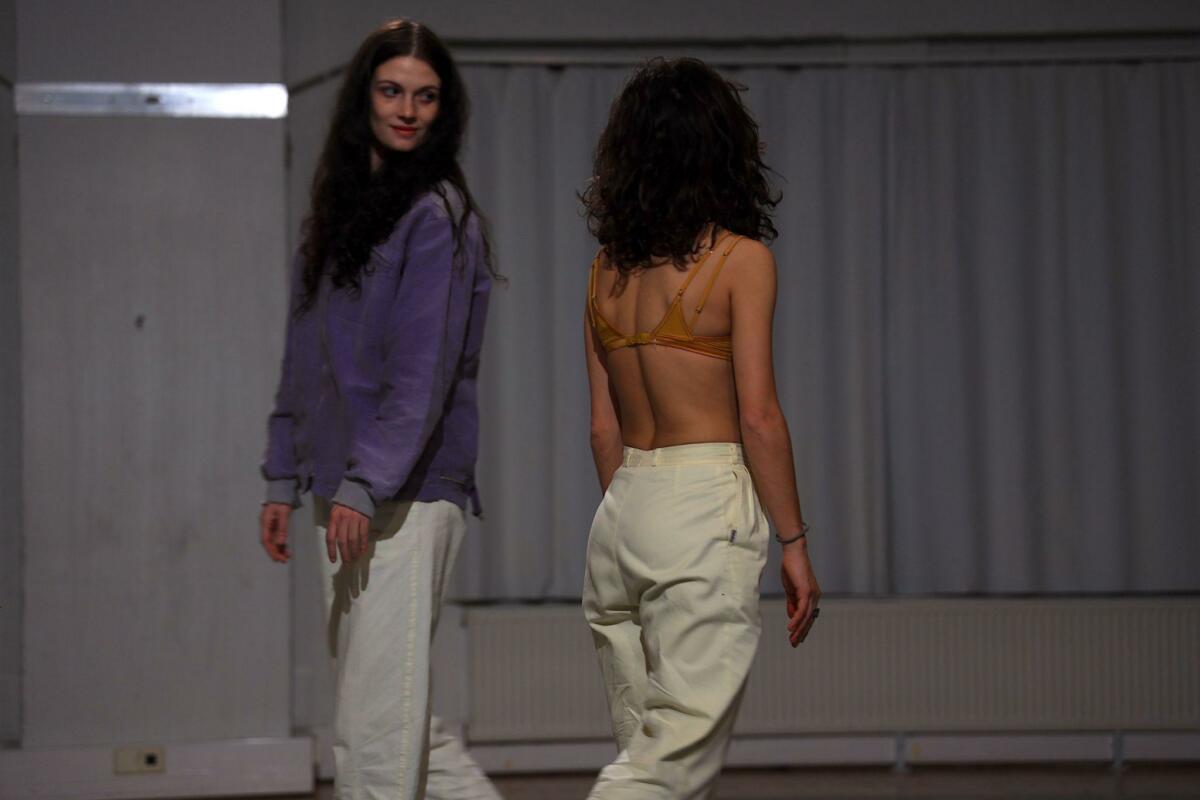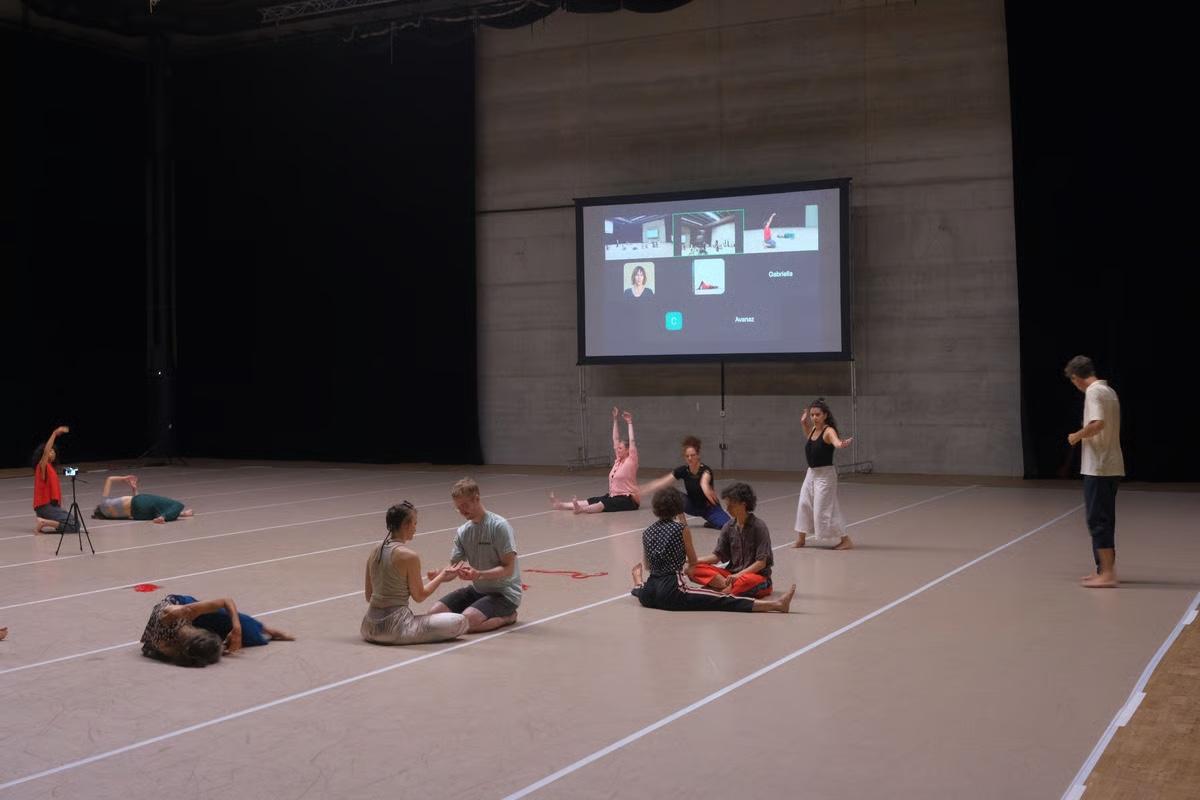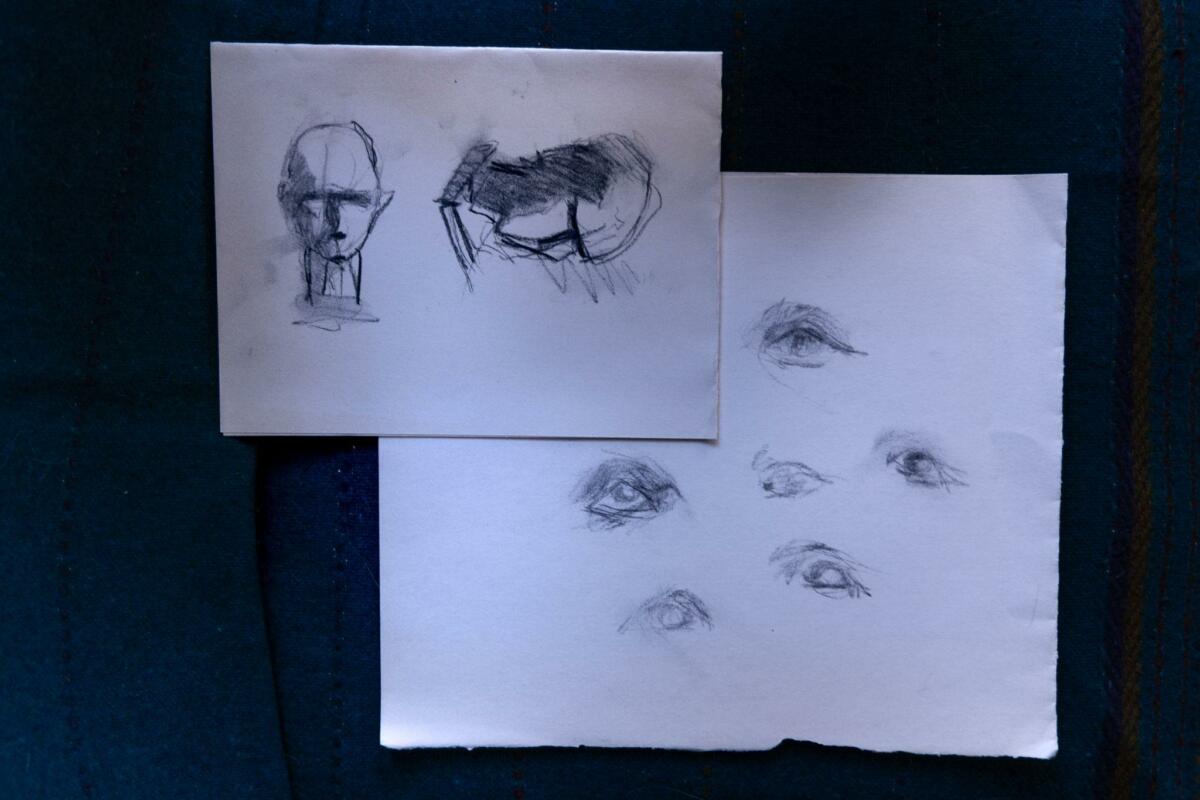How has my approach to choreography changed through my studies so far?
Artist-student of choreography Chen Nadler shares her thoughts around choreography and her studies

In this blog post, I will share my thoughts around choreography and my studies, responding to this: how has my approach to choreography changed through the studies so far?
Well,
I guess a simplified short answer will be
I’ve been always wondering about things\stuff\life
And now, I’m wondering in the form of a question
And for the longer one- let’s visit some examples, encountered in recent years, through them I will try to point out a few changes in my approach and communication through the choreography discourse.
To begin with
“You have to bear witness” — Funny Weather: Art in an Emergency
In my journey with choreography, I encountered this book by Olivia Laing. Through it, I wondered about the connection between complex layers of life and art, in times of crisis, responding and finding meaning, it’s not an easy thing to do. Witnessing is something that I think a lot of when pondering about creation with and for people. I am aware that I will never fully know the person in front of me, the tree next to me, the air I breathe—I will never fully understand, or grasp them. To some degree, we will stay strangers to each other. This realization keeps me alert and excited—there is always more to discover. With every encounter; a space for reflection, but also, a dilemma. Like a mirror- I see myself in the eye of the other… then comes responsibility; to observe, to listen, to feel, to move, (to try) to be interested, to look away! or– to face it!, to be respectful, ethical, to go towards, to be touched by—you and I in the same world. Multiple truths. What if there is a we?
In 2023, the first year of my MA studies, Jana Unmüßig (lecturer of Choreography MA, researcher) introduced me to the book The Ethics of Visuality-Levinas and the Contemporary Gaze by Hagi Kenaan. This book explores Emmanuel Levinas’s philosophy and the idea of optics as ethics: an encounter with the gaze of the other that evokes an ethical response. By spending time with the book and those concepts, I found words—and questions for ideas I had long felt deeply within my body, reflected on, and worked with. The experience brought a sense of relief and even belonging? as if walking alongside someone on a shared path. This encounter was one of many that have enriched my understanding of choreography as a broad, multidisciplinary process that begins and ends with a meeting, a meeting that could open a dialogue, evocate new or old frictions, or, relations– between artists, performers and audiences, people. At least, it has the potential to…
Let’s meet?

In July 2024, I participated as a choreographer at the ImPulsTanz – Vienna International Dance Festival, Symposium for Dance and Other Practices. There, I hosted a workshop where I shared a bodily-visiting practice that evolved from a ritual rooted in my Moroccan ancestry, a practice I had previously explored in my solo demonstration performance as part of my studies. In this solo/duet work, created together with Kadence Neill, I engaged with the knowledge inherent in the body, culture, and tradition, questioning the political art act, exploring what is projected, interwoven, and situated within a body presented on stage, and examining what is lost or found in attempting to translate or invite others and myself into this biographical, intimate ritual.
Engaging with the festival, artists, researchers, and academics through this research marked an important shift in my creative path —I do things with others. I enjoy crafting an invitation, and I do it while reaching different aspects I find useful. One of these elements is hospitality. In the cultures I grew up in, hospitality is a milestone in interpersonal conduct – sharing as a way of life has the potential to build community. I pay close attention to how the space we share looks and feels. For example, during the creative process, I bring food to share, we take walks together, have drinks, do communal bodily warm-ups as a team, and exchange feedback and reflections. Finally, I invite both myself and the audience to reflect on the body as a living, fluid archive. I create through and from the body, captivated by the knowledge it holds, resonates with, evokes, and transforms when encountering both strangers and familiar others in a particular space and time. Can the way we observe a performance change, reproduce, or even reinvent the way the work speaks?

In the vineyard (the grand hall of DA things)
A few years ago, I worked in a biodynamic vineyard. The concept by Rudolf Steiner, of “dynamism”, which characterizes this farming method, is drawn from the belief that the vineyard is part of a larger ecosystem, and everything alive is a process undergoing a constant transformation.
We performed a regular ritual treating the vines with a special liquid, where we mixed the fertilization material until the liquid blended and a kind of vortex formed in the water-organized, with a distinct direction and flow. The longer we mix, the stronger the vortex becomes. This is very impressive to the human eye (I thought)—the power of water to organize into a spiral extravaganza pattern. At the moment when the vortex was fully formed, we would change direction and stir the other way. Chaos is created in the water—the water moves in all directions, with no more symmetry. Yet as we continued stirring, the spiral pattern slowly re-emerged. We repeated this back and forth for about an hour.
I remember this practice with water and I let it resonate with every process I’m in. From my experience, in artistic choreographic practice, especially when collaborating with others and other disciplines, we constantly shift between flow and chaos. Interesting moments are the “in-between”, similar to the silent moments between inhale and exhale, they are easy to forget, but necessary to pay attention to. Also, repetition becomes a tool, for me, something I can lean on when creating, to help me bring imagined reality to life.

One ‘forms’ as one goes
“One either changes one’s environment visibly by changing one position, or one changes one’s ideas by imagining a particular walk. Both actual steps and the imagined ones influence our relation to space and time.” —Walking: Documents of Contemporary Art, edited by Tom Jeffreys
So, all this to say, perhaps, my approach to choreography has expanded. Two points that I can see clearly now…
Expanding 1)- the not-so-conscious practice of learning with and through. I have practised opening my body, mind, and heart—more than I expected—to embrace new perspectives, references, and knowledge within this discourse. It’s the ability to reach out and seek others, to draw on them, and to gain new approaches, thoughts and viewpoints. I’ve been learning to reach far, and then to come back closer, to be eager to learn from and with classmates and professors and everyday encounters. Learning about ideas, and concepts that have already been written and researched—and welcome them as friends. About “references” that are not only perceived in a written form but are alive and kicking! Those references that unfold from body to body and through ancestry knowledge- all the history embodied in us connected to many, stories, disasters, wishes, hopes. I could say that I’ve opened a pathway to connect with my roots, and I would like to stick around, to see what else can be discovered.
Expanding 2)- the active practice I now spend time with– choreography as an event, an invitation to gather together, for a condensed time, people from diverse backgrounds, expertise, experiences, and realities. In those horrific geopolitical times we live in, what new relations can we imagine? What will emerge?
To be a choreographer for me now, is perhaps more about imagining a certain meeting, then making that meeting happen…And then insisting, repeating and readapting that meeting every day until something emerges from this shared imagination—to create an artistic work together with others, a compound thing, a happening of chaos and questioning, an exploration of time, place, movement, energies, spirit, histories, cultural distances, the journey of translation, fresh concepts, misunderstandings, care, emotions, belonging and aloneness. It’s constant questioning, what conditions would allow us, within a collective process, to welcome and invite these layered, complex states of being, in both solitude and solidarity, through an ethos of hospitality? I see this almost as a social-political response.
Choreography can create a shared landscape where we flow, between the past, present, and future simultaneously, meeting and exploring states of being that tell something about this world, which unfolds from the process of working with and through this art form. There is something profoundly moving, especially now, for me, in this inner persistence, ongoing invitation, to create art with others.
Written by Chen Nadler
Choreoblog
A place for discussion and sharing, the blog for Master’s Degree Programme in Choreography brings together students, staff, and visitors to write and read about choreography, studying, ongoing projects, (dance) art, and related topics.
Latest posts
Follow blog